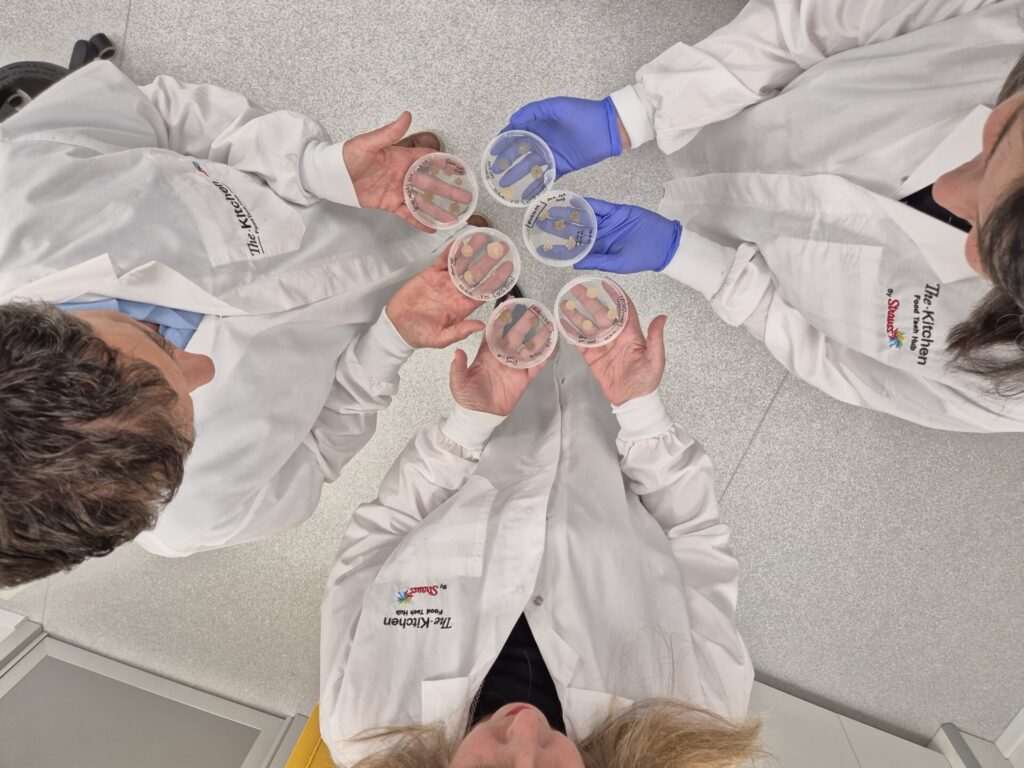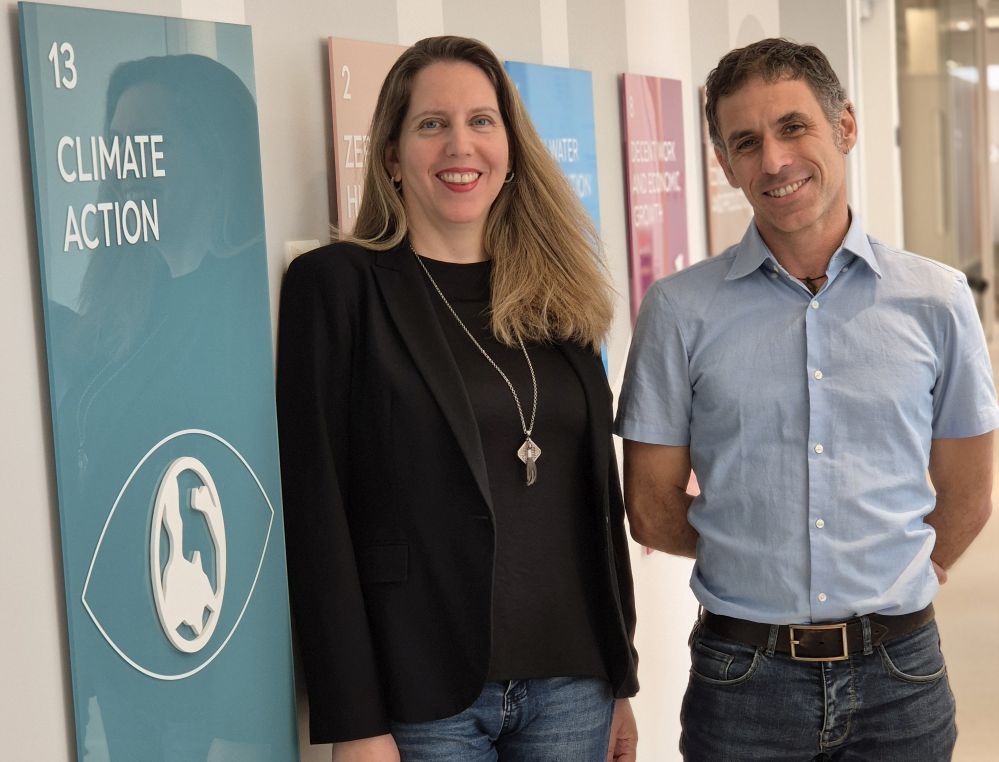Israeli startup Kokomodo has emerged from stealth to produce cocoa via plant cell culture, armed with $750,000 from The Kitchen FoodTech Hub by Strauss and the Israel Innovation Authority.
With demand for cocoa expected to dramatically exceed supply in the coming years, a flurry of creative solutions has emerged, with startups exploring alternatives made with everything from carob and barley to upcycled coffee grounds and grape seeds.
Kokomodo—a joint venture between The Kitchen and Plantae Bioscience—is one of a new breed of startups looking to produce cocoa (California Cultured, Celleste Bio) or cocoa bioactives (Ayana Bio) from plant cells.
Rather than using sunlight, water, and soil to nurture fully-grown plants, firms using plant cell culture grow plant cells indoors in bioreactors fed on sugars, vitamins, minerals, and other nutrients.
‘In a few years, we should be on par with the price of premium cocoa going to the chocolate industry’
Plant cell technology is already used on a commercial scale to produce a handful of drugs, notably breast cancer drug Taxol, but has recently attracted interest in the nutraceuticals space as botanical supply chains become increasingly threatened.
That said, growing cocoa in bioreactors is seen as especially challenging given the large volumes required and relatively low prices compared to, say, saffron or vanilla, even with recent price hikes.
However, Kokomodo cofounder and CEO Tal Govrin reckons it can make economic sense with the right cell lines.
“The cost structures we have today may be more relevant for [supplying] the dietary supplement [market] in the short term,” said Govrin, who has 20+ years’ experience in strategy, business development, and sales, in consumer goods, pharmaceuticals, and investment banking.
“But in a few years, we should be on par with the price of premium cocoa that is going into the chocolate industry,” she told AgFunderNews.
How it works
CTO Dr. Dario Breitel, who has been working on tissue culture at Plantae for over two years, explained: “We began by obtaining fresh beans [the seeds of the cacao fruit] from high-quality cacao varieties grown in South and Central America.
“Then we go through a process whereby we get to a callus [an undifferentiated cluster of cells that behave like stem cells] and then when you give them nutrition, they propagate, and once they propagate enough [on a plate], we transfer them to liquid media.”
Here they are encouraged to grow and proliferate until a certain point at which Kokomodo alters the environment and the media to elicit the production of certain components, said Breitel. “There are different ways [to elicit the production of certain components] so we can feed the cells something or we can apply abiotic stressors [changing the temperature or other environmental parameters].
“The advantage of our process is that it is completely controlled so we get a consistent product, plus we don’t have to worry about heavy metals [which can be sucked up into cocoa plants through the soil].”
While Kokomodo is not genetically engineering its cells, it is using its understanding of plant metabolomics to help guide the above process, said Govrin.
“We have a lot of knowledge on how to amplify certain components in the plant in a natural way. The other thing that makes us unique is that we have established multiple different cell lines from different varieties. Some are very high in antioxidants, while others have a richer aroma, for example.”

Fermentation, roasting, and grinding
Once the cocoa biomass is harvested, it has to be fermented and then roasted and ground like regular cocoa beans, although gentler treatment is required at each stage, said Govrin.
“We can also very closely control the downstream process at every stage to create custom products for different customers and applications.”
Asked how Kokomodo’s cocoa compares to cocoa from fermented, roasted and ground beans, she said: “We have done an analysis on several aspects including antioxidants and volatiles and some of our lines are 10 times richer in antioxidants compared to the benchmark product. Others are richer in protein, meanwhile.”
The business model
She added: “Our model is to be a b2b ingredients company serving different clients in different industries from cosmetics to premium chocolate.”
Asked about potential partnerships, either for manufacturing scaleup or for distribution and sales, she said: “I’m a great believer in working together and scaling up together if you’re startup and you want to get fast to the market.”
With the price of cocoa currently in the stratosphere, she said, investors quickly “get the why” of Kokomodo, and move onto more practical questions. “They all see the big picture, but it’s a case of how do you scale up, how do you go to market, who are the right partners, what’s the regulatory pathway?”
On the latter front, she said, “In the US it will be the GRAS [Generally Recognized as Safe] process and in the EU, probably [The] Novel Food [Regulation].”
While it is tempting to compare plant cell culture to cultivated meat, she said, the unit economics are very different: “Our cost structure is completely different to cultivated meat in terms of the media costs and the fact that the toxicity [certain waste components from cells that need to be removed from the media] in plant cell culture is not even close to animal cells, plus we don’t need to create 3D structures and use scaffolding [upon which to seed cells] and so on.”

The case for plant cell culture
Advocates of plant cell culture say it offers some key advantages over conventional agriculture.
First, there’s a sustainability argument: Why use all that agricultural land, water and energy to nurture fully-grown plants when you’re only interested in one small part of the plant?
Second, they say, plant cell culture can ensure a consistent supply of botanicals with supply chains increasingly threatened by climate change and unpredictable weather, political instability, adulteration, disease, and heavy metals and pesticides from soil.
Third, they claim, it offers the promise of rapid, consistent, and controlled production of plant compounds regardless of season or location in a sterile environment, with no pesticides.
Finally, they argue, it can also deliver higher yields. For example, by understanding the metabolic pathways in plants that produce certain polyphenols and the precise conditions that drive plants to generate more of them, skilled players in plant cell culture can achieve concentrations of bioactives that far exceed those produced by plants grown in the wild or via traditional agriculture.
Further reading:
🎥 Futureproofing the botanicals supply chain with plant cell culture startup Ayana Bio




